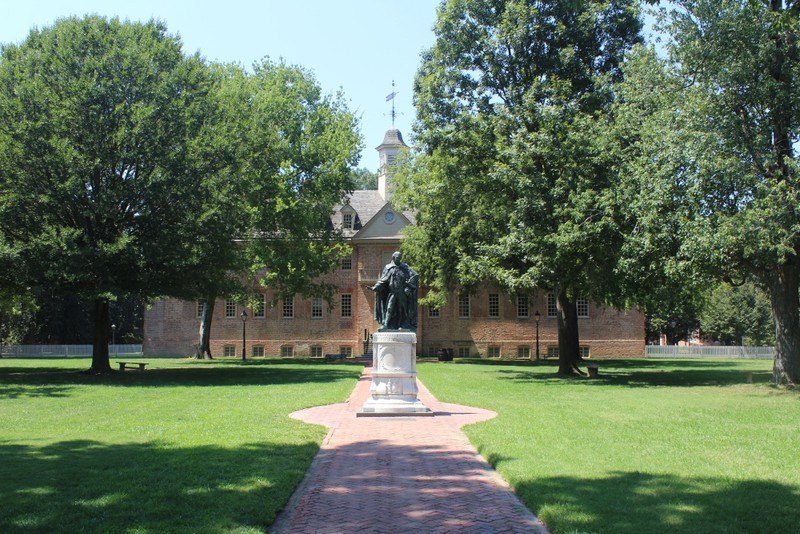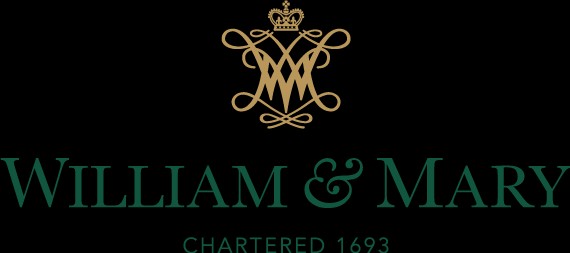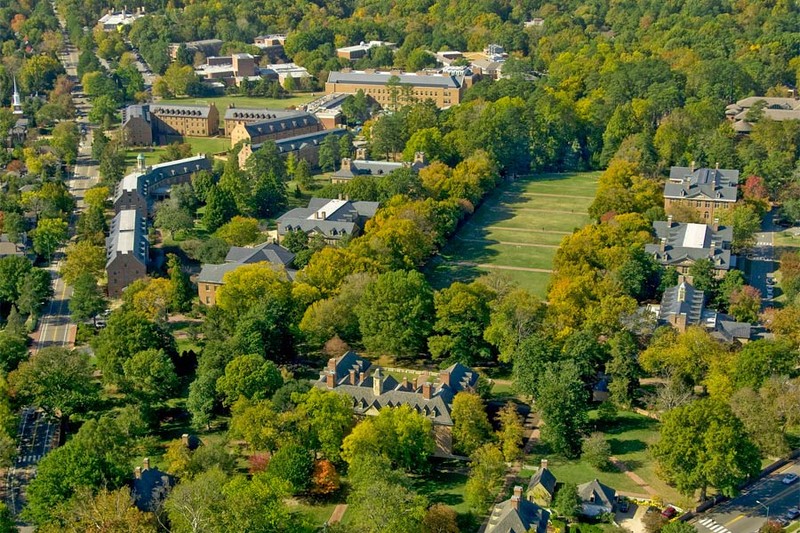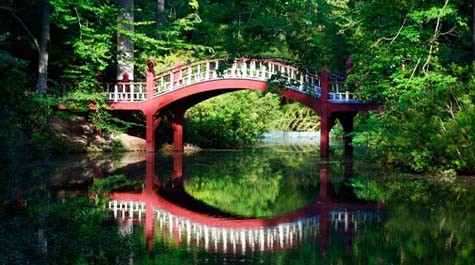Wren Building, College of William & Mary
Introduction
Author-Uploaded Audio
00:00 / 00:00
Listen to a narration of this entry's description by Victoria Endres.
Text-to-speech Audio
Images
Featured in front of the Wren Building is a statue of Lord Botetourt, a Royal Governor of Virginia and member of the College's Board of Visitors. He died in 1770 and was buried in the building's chapel. Image obtained from WY Daily.

Current logo of the College of William & Mary. Imaged obtained from the College of William & Mary official website.

Aerial view of the college campus. Image obtained from Flickr.

The campus' Crim Dell Bridge is a popular site for students and visitors. Image obtained from the College of William & Mary official website.

Backstory and Context
Author-Uploaded Audio
00:00 / 00:00
Listen to a narration of this entry's description by Victoria Endres.
Text-to-speech Audio
Plans for an institution for higher education in or around the Jamestown settlement were discussed as early as 1618. These were postponed indefinitely, however, as conflicts developed with local Native Americans. The College of William & Mary was finally created on February 8, 1693, when King William III and Queen Mary II of England issued a charter establishing a royal college in the Virginia colony. 330 acres of land were purchased from Capt. Thomas Ballard in what is now Williamsburg, and a tax was issued on tobacco, furs, and skins exports to support the new school. Construction of the college’s first structure, the College Building (today known as the Wren Building) began in 1695. This building became the temporary headquarters for the colonial government from 1700-1704 while the new Capitol was being built in Williamsburg, and again from 1747-1754 when the aforementioned Capitol burned down. The college originally opened with two schools: a grammar school and an Indian school for educating Native Americans.
William & Mary underwent several changes following American independence in 1776. The school transitioned from a royal college to a private university, opened several graduate schools, and founded the Phi Beta Kappa honor society. The college closed when the Civil War began in 1861 as a majority of the students and faculty enlisted in the Confederate army. The campus was briefly used as a barracks and hospital for the Confederates before Williamsburg was captured and occupied by Union troops for the duration of the war. The college was unable to reopen until 1869, and then closed again in 1882 due to financial difficulties. It reopened permanently in 1888 when the Virginia legislature appropriated funds to train public school teachers at the college.
In 1906, the Virginia legislature took over William & Mary and designated it a public university. In 1918, it became the first coeducational college in Virginia. In the late 1920s and early 1930s, the Brafferton, the Wren Building, and the President’s House were all restored to their eighteenth century appearance as part of a broader project to restore many of Williamsburg’s colonial era structures. The college expanded rapidly during the twentieth century, with many new buildings constructed and enrollment climbing. Due to the school’s origins as a royal college, William & Mary was also visited several times by British Prime Minister Margaret Thatcher, Prince Charles, and once by Queen Elizabeth II.
Today, the College of William & Mary occupies a 1,200 acre campus, much of it consisting of the College Woods, Lake Motoaka, and the Martha Wren Briggs Amphitheatre. The campus is also commonly referred to in sections: the “Ancient Campus” consists of buildings dating to the eighteenth century; the “Old Campus” is made up of structures built in the 1920s and 1930s, including Zable Stadium and the Sunken Gardens; the “New Campus” consists of buildings mostly constructed between 1950 and 1980. William & Mary is noted for having one of the highest quality educations for a public university, with a 12-to-1 student-faculty ratio and over 8,000 enrolled students.
Cite This Entry
Admin, Clio, Steven Cody Straley, and Victoria Endres. "Wren Building, College of William & Mary." Clio: Your Guide to History. September 5, 2020. Accessed April 24, 2025. https://theclio.com/tour/1421/3
Sources
“Historical Chronology of William & Mary.” College of William & Mary. Accessed August 13, 2017. www.wm.edu/about/history/chronology/index.php.
“History & Traditions.” College of William & Mary. Accessed August 13, 2017. www.wm.edu/about/history/index.php.
Image 1: http://wydaily.com/wp-content/uploads/2015/08/wren-building.jpg
Image 2: http://www.wm.edu/img/wm_vertical_single_line_full_color.png
Image 3: https://c2.staticflickr.com/8/7346/10573749733_f05944fc64_b.jpg
Image 4: http://www.wm.edu/as/biology/planttour/_photosets/crimdell/dellbridge.jpg

